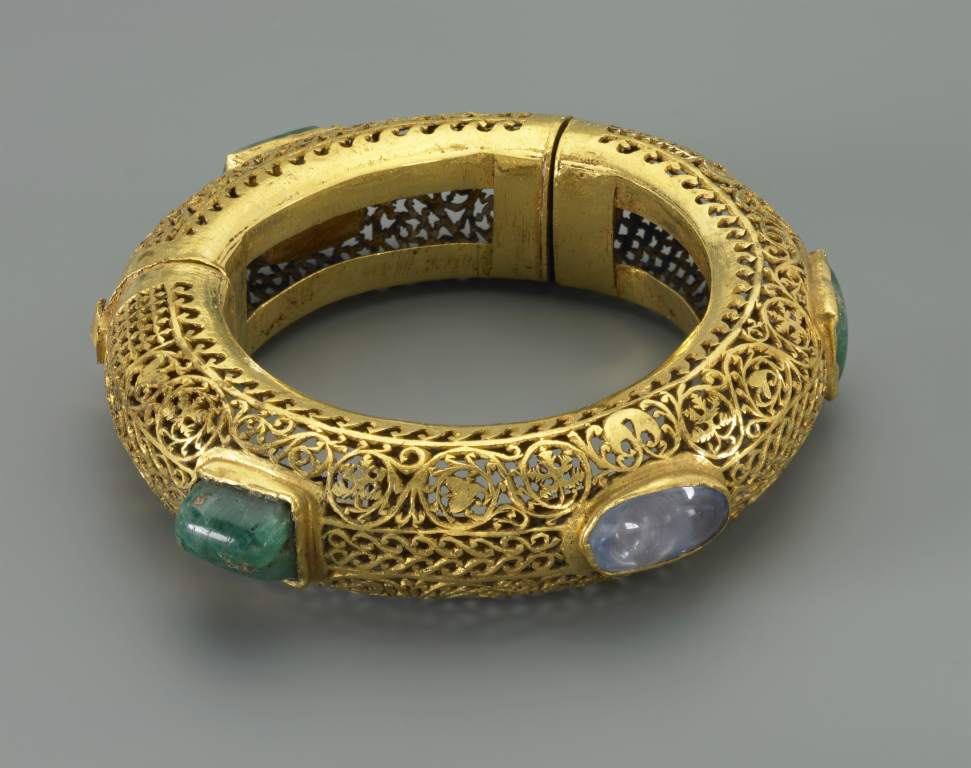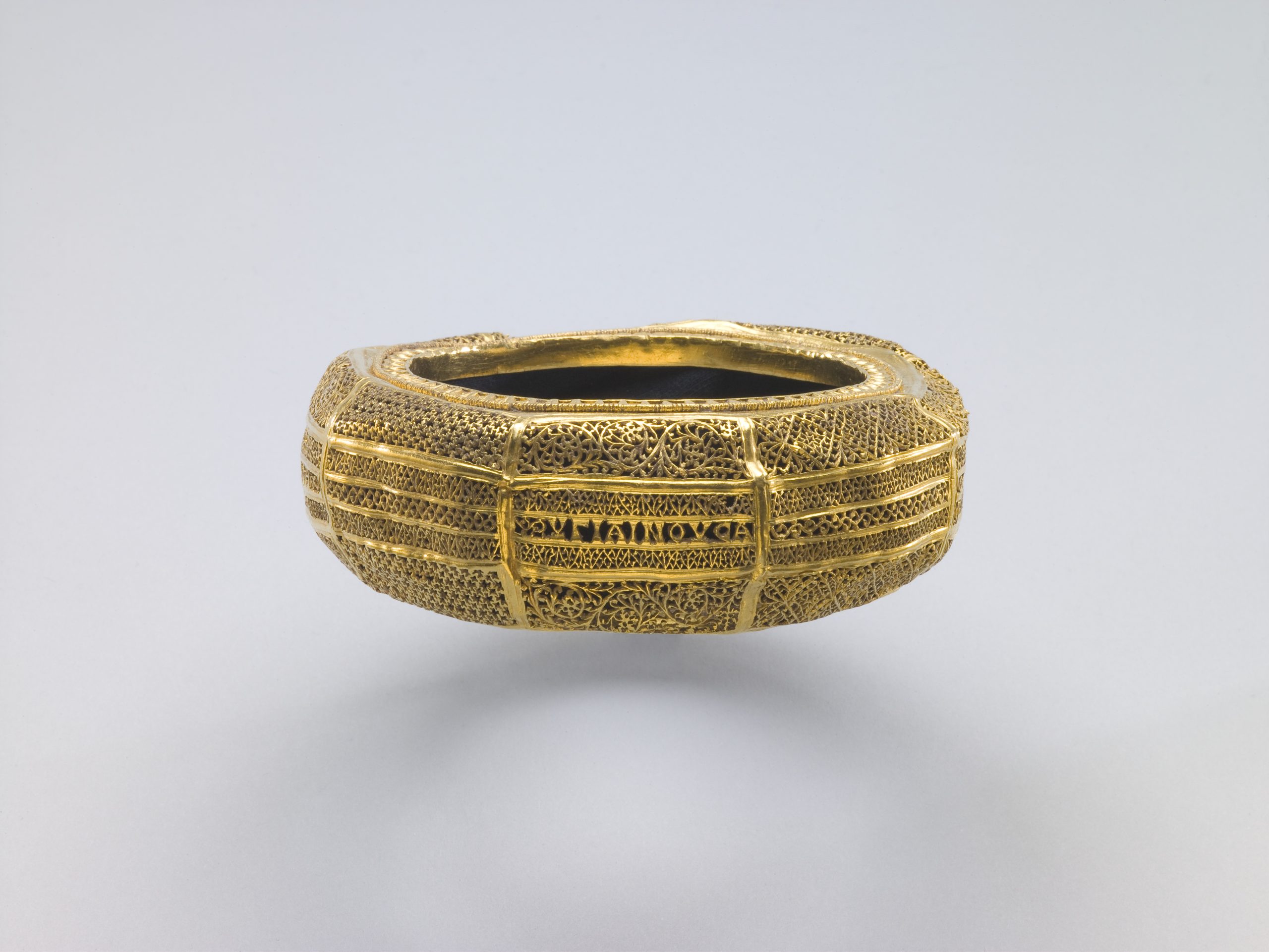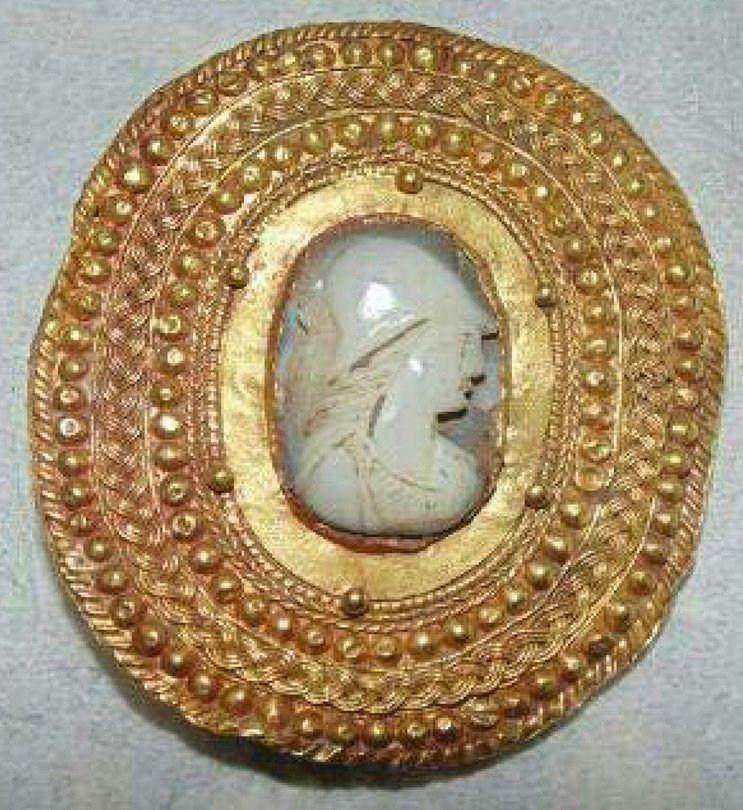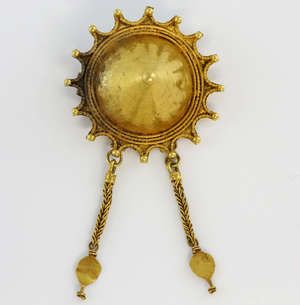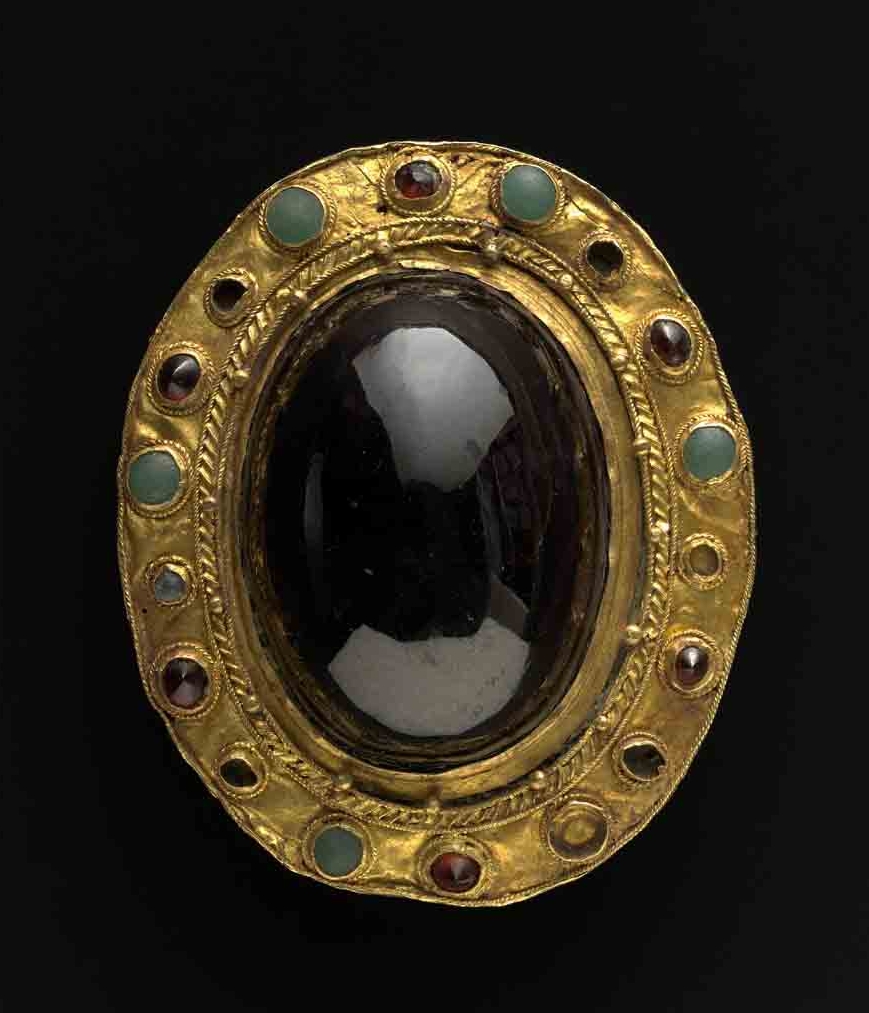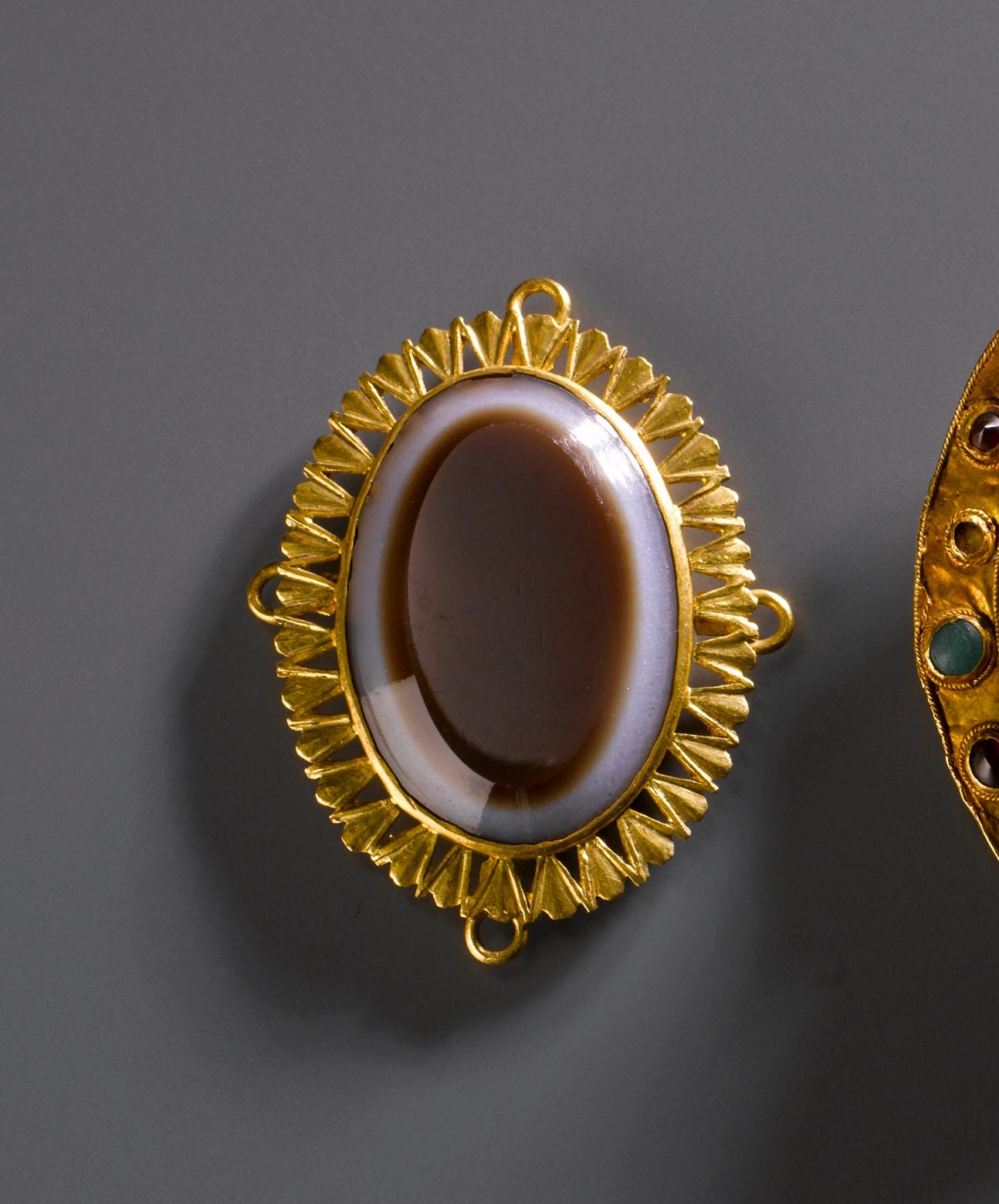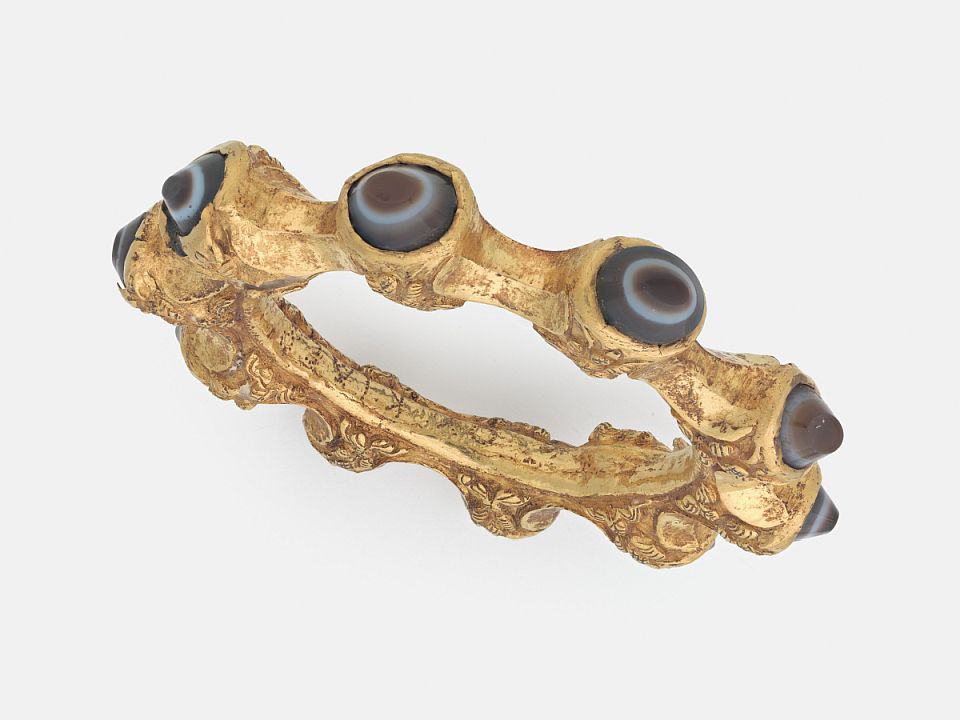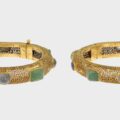Bracelets from Viminacium and Sirmium as evidence of Palmyra goldsmithery influences on local jewelry production,
Ivana Popović, 2005
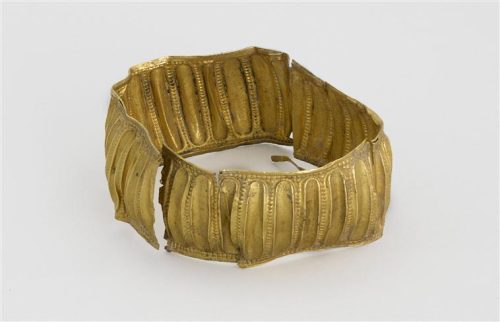
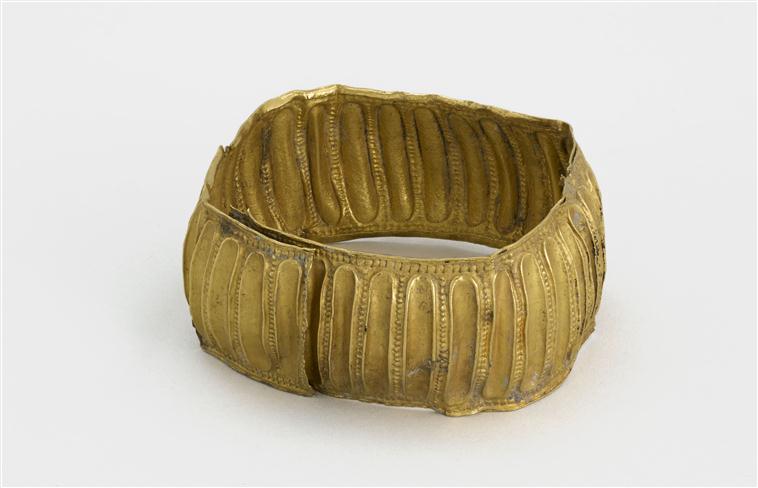
Pair of bracelets from the Treasure of Rethel, 3rd century. Gold, width 3.3 cm.
“The tendencies towards geometrization of form and highly reduced ornament determine them in the late phase of development of this jewelry type, generally dated in the second half of the 3rd century.” [I. Popović 2005]
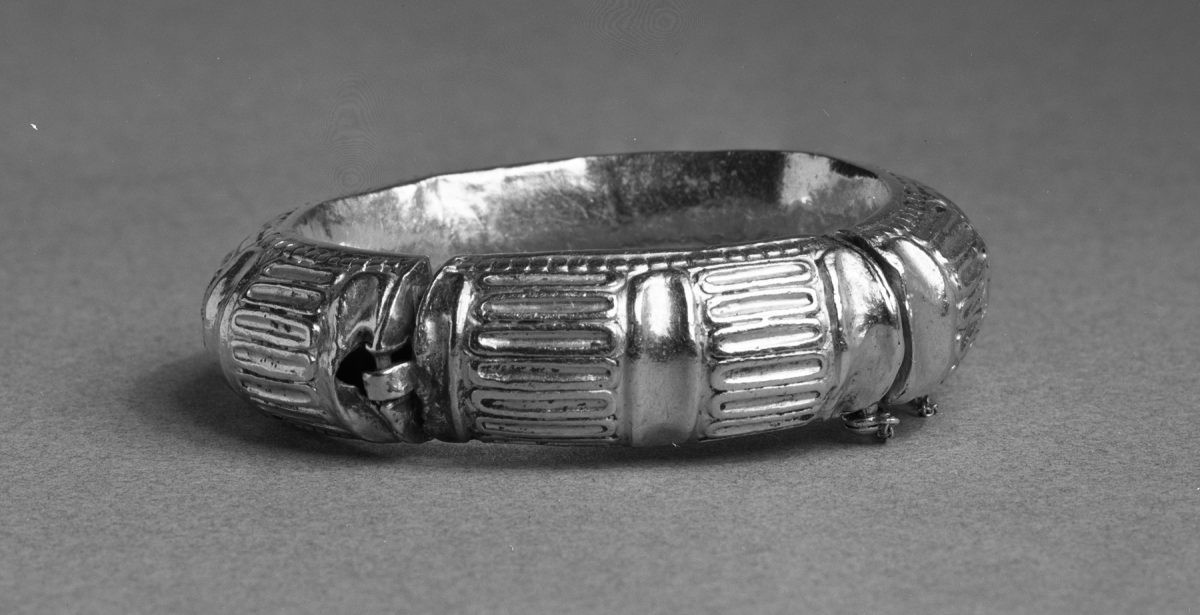
Bracelet from Tartus, Syria. Gold, 1.7 x 7.3 cm
The Walters Art Museum 57.1737
“This bracelet, consisting of two tubular pieces of sheet metal, was first photographed ca. 1912 with a number of other objects (the present Metropolitan Museum of Art, inv. 47.100.33 and Berlin, Staatliche Museen, Antikensammlung, Inv. 30099 among them) that probably come from a single wealthy woman’s burial and are datable ca. 250-350 AD.” [Museum’s description]
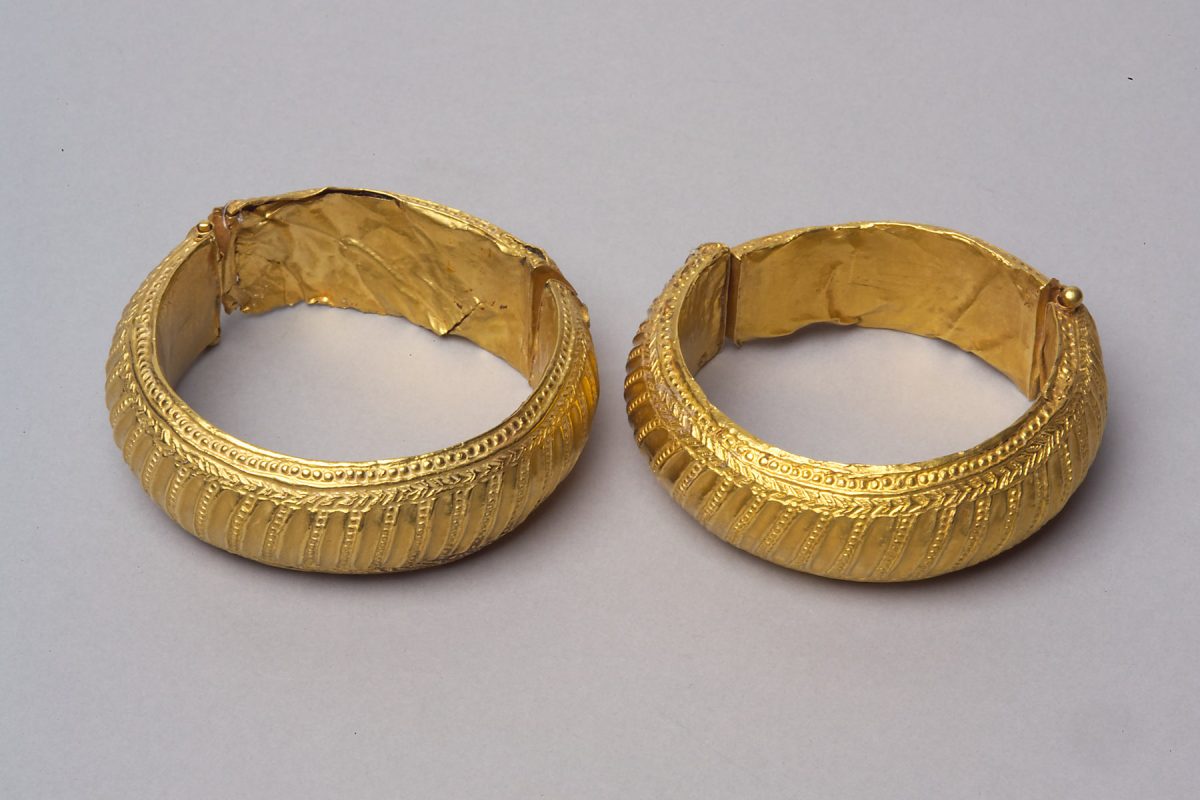
Pair of bracelets from Viminacium, 3rd century.
Gold, Dm. 9,3 cm, weight 143,6 g
KHM Wien https://www.khm.at/de/object/70488/
“They each consist of two parts. The closure is a hinge or a closure in the form of three eyelets and a pin with a button-like end that can be pushed through. The curved outside is decorated with stripes in embossed ornamentation, the inside is smooth.” [Museum’s description]
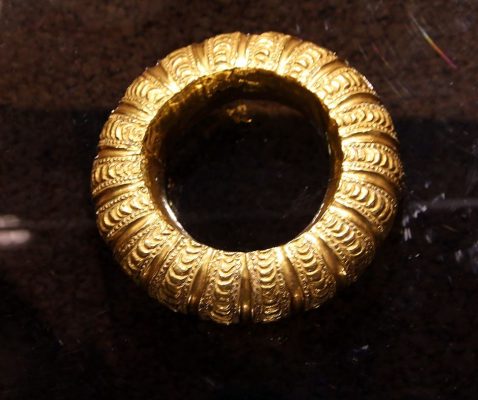
Embossed gold Roman bracelet,3rd century , found in Porto Torres. On display in the Museo Archeologico Nazionale at Cagliari.


